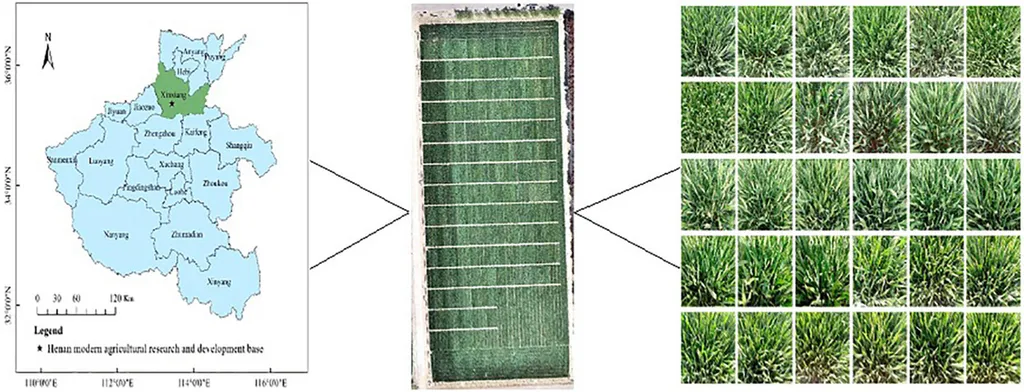In the heart of China’s Xinjiang region, researchers are making strides in precision agriculture that could reshape how farmers monitor and manage wheat crops. Hongxin Wu, a lead author from the College of Information Engineering at Tarim University, has developed a novel algorithm called FEWheat-YOLO, designed to accurately detect and count wheat spikes—a critical task for yield estimation and variety selection.
The challenge of detecting wheat spikes in complex field environments has long hindered the adoption of automated solutions. Traditional models often struggle with small target sizes and morphological variations, leading to inaccuracies in real-world applications. Wu’s research, published in the journal ‘Plants’ (known in English as ‘Plants’), introduces a lightweight and efficient detection framework optimized for deployment on agricultural edge devices.
FEWheat-YOLO integrates four key modules to enhance detection accuracy and efficiency. The FEMANet module uses Efficient Multi-scale Attention (EMA) to improve small-target representation, while the BiAFA-FPN module ensures efficient multi-scale feature fusion. The ADown module preserves structural details during resolution reduction, and the GSCDHead module reduces parameters and computational cost. “Our goal was to create a model that balances detection accuracy, counting performance, and model efficiency,” Wu explained.
The model was evaluated on a hybrid dataset combining the Global Wheat Head Detection (GWHD2021) dataset and a self-collected field dataset. FEWheat-YOLO achieved impressive results, with a COCO-style Average Precision (AP) of 51.11% and an AP@50 of 89.8%. The model demonstrated high counting accuracy and robustness, with an R2 of 0.941, a Mean Absolute Error (MAE) of 3.46, and a Root Mean Square Error (RMSE) of 6.25.
Compared to the YOLOv11n model, FEWheat-YOLO improved detection metrics while significantly reducing parameters, computation, and model size. “This research provides a strong foundation for real-time agricultural applications on resource-limited platforms,” Wu noted.
The implications of this research are far-reaching. Accurate wheat spike detection and counting can lead to better yield estimation, variety selection, and overall crop management. For the energy sector, this technology could contribute to more efficient use of agricultural resources, reducing the environmental impact of farming practices.
As precision agriculture continues to evolve, the development of lightweight, efficient models like FEWheat-YOLO will be crucial. Wu’s research not only addresses current challenges but also paves the way for future advancements in the field. “We believe that our model can be adapted for other crops and applications, further enhancing the capabilities of precision agriculture,” Wu added.
In a world where food security and sustainable farming practices are increasingly important, innovations like FEWheat-YOLO offer a glimpse into the future of agriculture. By leveraging advanced technologies, researchers and farmers can work together to create more efficient, sustainable, and productive farming systems.

